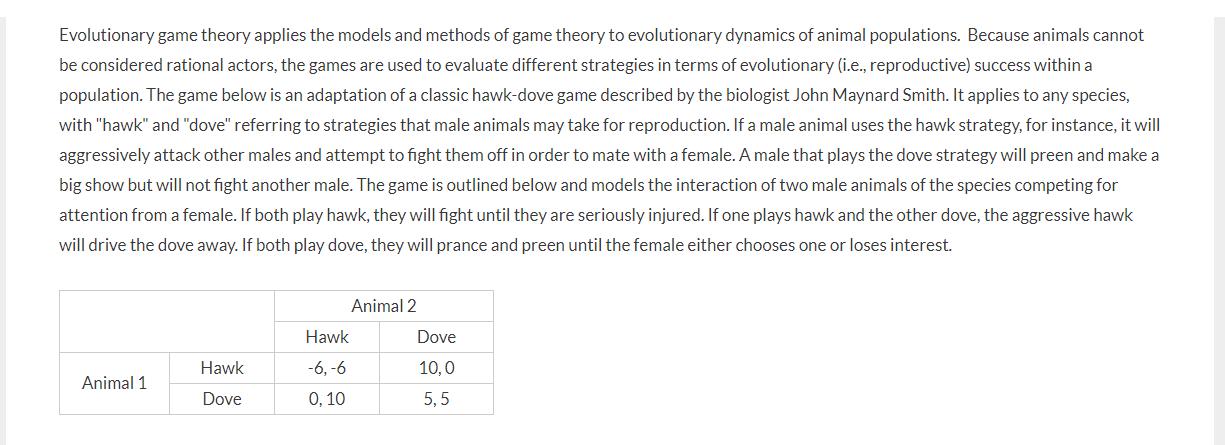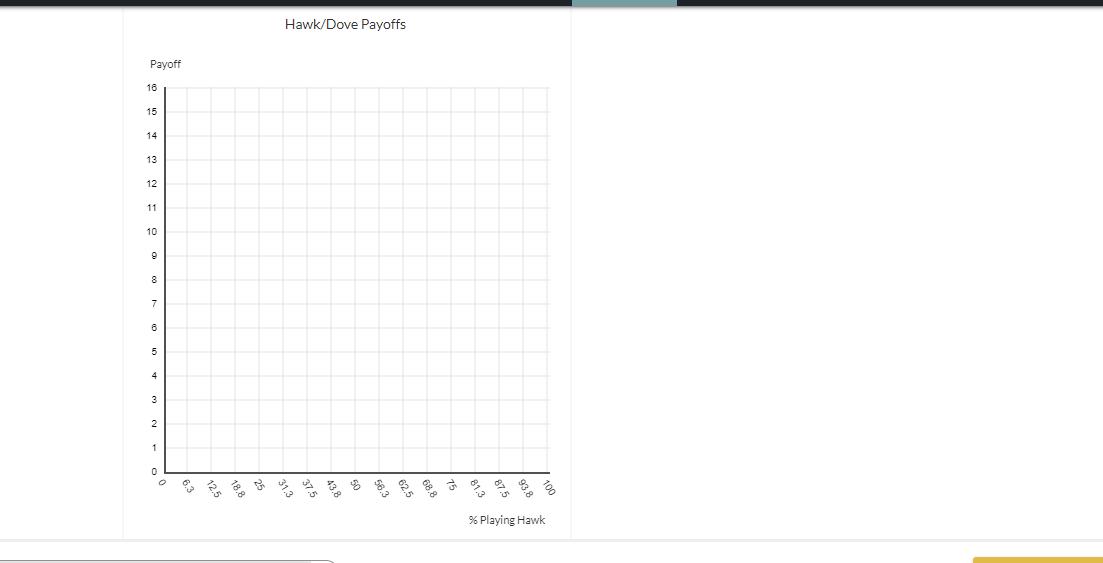Answered step by step
Verified Expert Solution
Question
1 Approved Answer
Evolutionary game theory applies the models and methods of game theory to evolutionary dynamics of animal populations. Because animals cannot be considered rational actors,




Evolutionary game theory applies the models and methods of game theory to evolutionary dynamics of animal populations. Because animals cannot be considered rational actors, the games are used to evaluate different strategies in terms of evolutionary (i.e., reproductive) success within a population. The game below is an adaptation of a classic hawk-dove game described by the biologist John Maynard Smith. It applies to any species, with "hawk" and "dove" referring to strategies that male animals may take for reproduction. If a male animal uses the hawk strategy, for instance, it will aggressively attack other males and attempt to fight them off in order to mate with a female. A male that plays the dove strategy will preen and make a big show but will not fight another male. The game is outlined below and models the interaction of two male animals of the species competing for attention from a female. If both play hawk, they will fight until they are seriously injured. If one plays hawk and the other dove, the aggressive hawk will drive the dove away. If both play dove, they will prance and preen until the female either chooses one or loses interest. Animal 1 Hawk Dove Animal 2 Hawk -6, -6 0, 10 Dove 10,0 5,5 Payoff 16 15 14 13 12 11 10 9 8 7 8 5 4 3 1 0 Hawk/Dove Payoffs % Playing Hawk Let p denote the percentage of animals playing hawk in the population. We can then consider the expected payoff to any animal from each strategy based on the likelihood that another animal it encounters will play hawk. For example, if 10% of animals play hawk, an animal playing dove has a 10% chance of a -6 payoff and a 90% chance of a 5 payoff. The expected payoff for such an animal would then be E(0.1) = 0.1 (-6) +.9 5 = 3.9. You can take the next step of writing out the expected payoff as a function of p. Then, on the graph below, draw the expected payoffs for animals playing hawk and dove, respectively, as a function of the percentage of hawks in the population. For ease of reading the graph, the probability is plotted in percentage terms, from 0 to 100%. You should draw two lines, one that shows the payoff for playing hawk and another that shows the payoff for playing dove. Be sure that each extends fully across the graph from one axis to the other. What percentage of animals would you expect to play hawk in equilibrium? %
Step by Step Solution
★★★★★
3.38 Rating (157 Votes )
There are 3 Steps involved in it
Step: 1

Get Instant Access to Expert-Tailored Solutions
See step-by-step solutions with expert insights and AI powered tools for academic success
Step: 2

Step: 3

Ace Your Homework with AI
Get the answers you need in no time with our AI-driven, step-by-step assistance
Get Started


